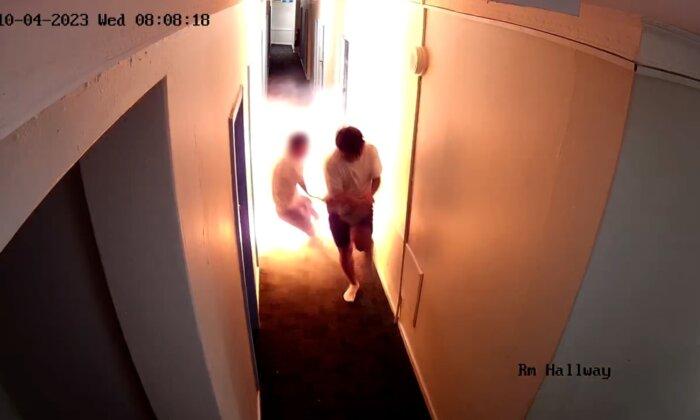Lithium battery fires in New South Wales (NSW) are on the rise, prompting the state government and firefighters to warn the public about the danger.
A spate of incidents has led to Fire and Rescue NSW (FRNSW) alerting the public to never sleep or leave home while lithium battery-powered devices are on charge.
The state’s fire department has been called out to 13 lithium battery fires since Feb. 2, four of which occurred within a 12-hour period.
So far this year, FRNSW has fought 25 lithium-ion-related fires, involving e-scooters, e-bikes, and other devices.
“While investigations are ongoing, it is believed the fire was caused by an incorrect charger being used in tandem with a modified device, two of the leading causes of lithium-ion battery-related fires.”
FRNSW warned residents not to throw out lithium-ion batteries out in the rubbish due to the risk of garbage truck or rubbish tip fires.
Charging devices should not be left on beds, sofas or highly flammable materials and they should be charged outside if possible.
In addition, it is recommended to always buy reputable lithium-battery brands and avoid mixing and matching components.
Fire and Rescue NSW Commissioner Jeremy Fewtrell said lithium-ion fires were happening to households almost every day.
“People are aware of the risks but are still willing to overcharge their lithium-ion batteries, leave them on charge when they sleep or mix and match power cords. It’s a recipe for disaster and they need to stop now.”
Fewtrell warned not to charge lithium-ion-powered devices near exit points, noting that in three recent fires residents were “trapped by the flames and were forced to flee through windows.”
In 2024, there had been 318 lithium-ion battery fires in NSW, up from 272 in 2023 and 165 of 2022.
What Are the Statistics?
A recent survey commissioned by the NSW Department of Customer Service revealed that 73 percent of people charge lithium-ion battery devices unsupervised.Meanwhile, 70 percent charge batteries near living spaces or exits, 64 percent leave devices plugged in after charging, and 51 percent use low-quality chargers or batteries.
About 32 percent of individuals do not know how to carry out safety measures in relation to lithium-ion battery products.
The latest warning follows the Coroners Court of NSW announcing they would conduct an inquest into deaths and serious fires caused by lithium-ion batteries.
Fire Rescue Victoria issued a warning on the risk of lithium-ion batteries in 2024 following a fire at student accommodation.
New Safety Standards
On Feb. 1, NSW Fair Trading brought in new product safety standards to prevent faulty lithium-ion battery powered e-bikes, e-scooters, e-skateboards, and hoverboards from entering the market.Better Regulation and Fair Trading Minister Anoulack Chanthivong said poorly designed and built lithium-ion batteries present a real and potentially life-threatening risk to consumers.
NSW Environment Protection Authority Executive Director Alexandra Geddes said one in four people were still putting batteries in rubbish bins, adding “we need to do better.”
“Batteries must be disposed of safely at dedicated drop-off points to help prevent these growing fires. Every year, we see fires breaking out in garbage trucks and recycling facilities because people are throwing batteries in household bins. This is not just dangerous—it’s avoidable,” she said.







